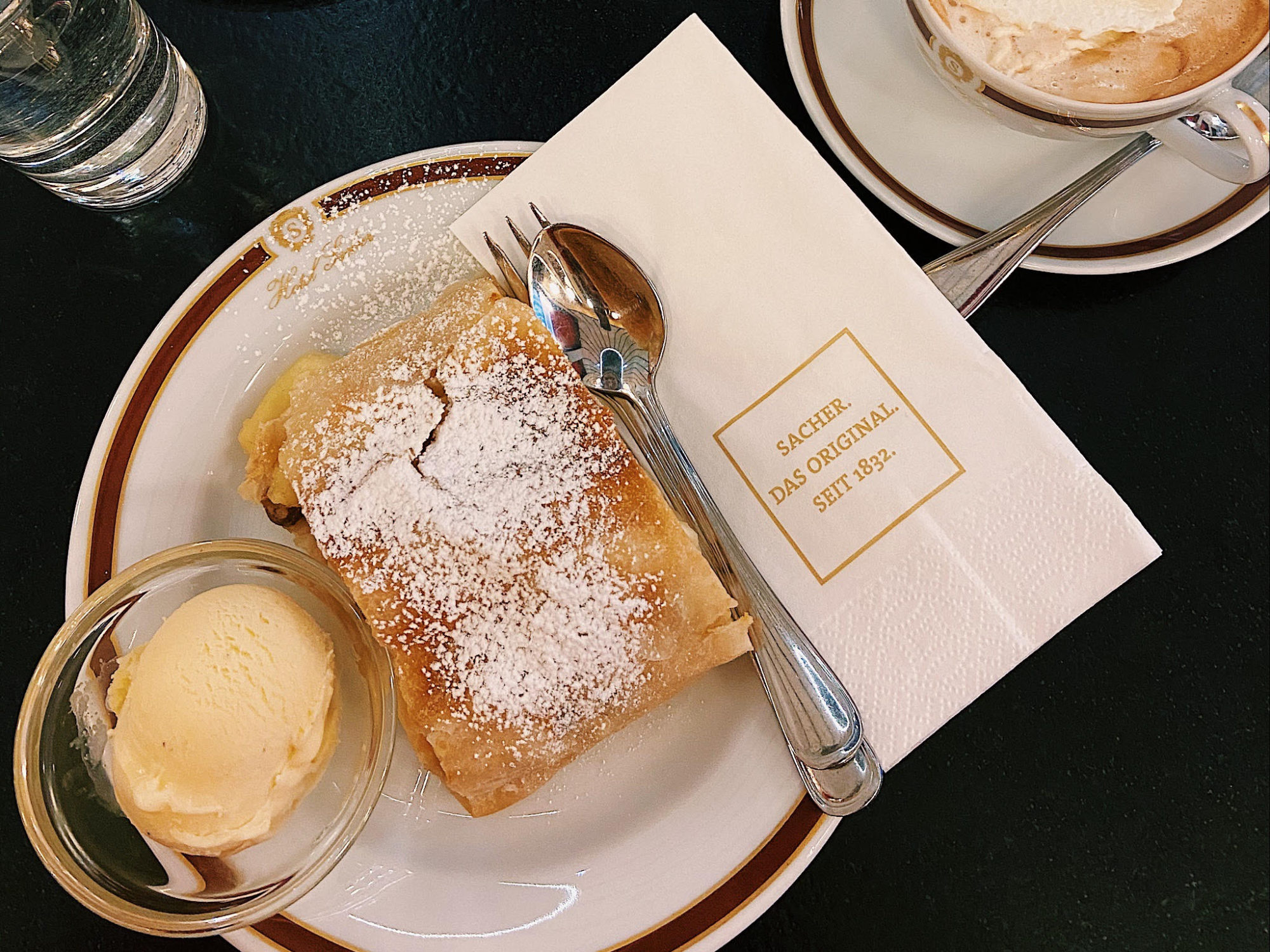Anyone who knows me knows that my love for holidays is only matched by my love for celebrating my birthday (January, if you’d like to send a card). And, spending the last 4 years living in Singapore, I’ve been lucky to have all manner of amazing places right on my doorstep for a celebratory getaway.
Desert island? Jump on a bus (and then boat) up to Rimba, off Malaysia. Bali? Just a 2.5 hour hop, skip and a jump over the sea. Australia? OK, a bit further, but still do-able for a long weekend, especially when you’re only afforded 15 days’ leave per year.
Surfing the web for a weekend escape in January since moving to Spain, though, I realised that the ideal place to go in a European January is really… right where I’d just moved to Europe from.
Diving into my research, all the travel websites I visited extolled the virtues of Thailand, Australia and the Maldives. Of course they did! But my resolution for 2020 was to travel less (little did I know just how much less… thanks, universe), and though I’m a big believer in the importance of a good YOLO once in a while, my budget wouldn’t stretch to such far-flung locations.
Looking closer to home, I had to face facts. I was going to have to go somewhere cold, likely grey, and possibly rainy. I also had to be able to get there directly from Valencia airport. I didn’t fancy a big weekend of nightlife – I was getting on, after all. Getting out into the wilds of nature appealed, but I’m a terrible driver and didn’t much fancy spending the weekend trying to stay in one piece.
It was the epitome of a first world problem, and I was beginning to give up (interestingly, Conde Nast Traveller magazine does a ‘where to visit’ for every month except, seemingly, January). Until I got a pleasant surprise – direct flights from Valencia to Vienna! I couldn’t believe it – affordable, accessible, and in a country I’d not yet visited. I snapped the flights up and text my BFF: let’s get planning.
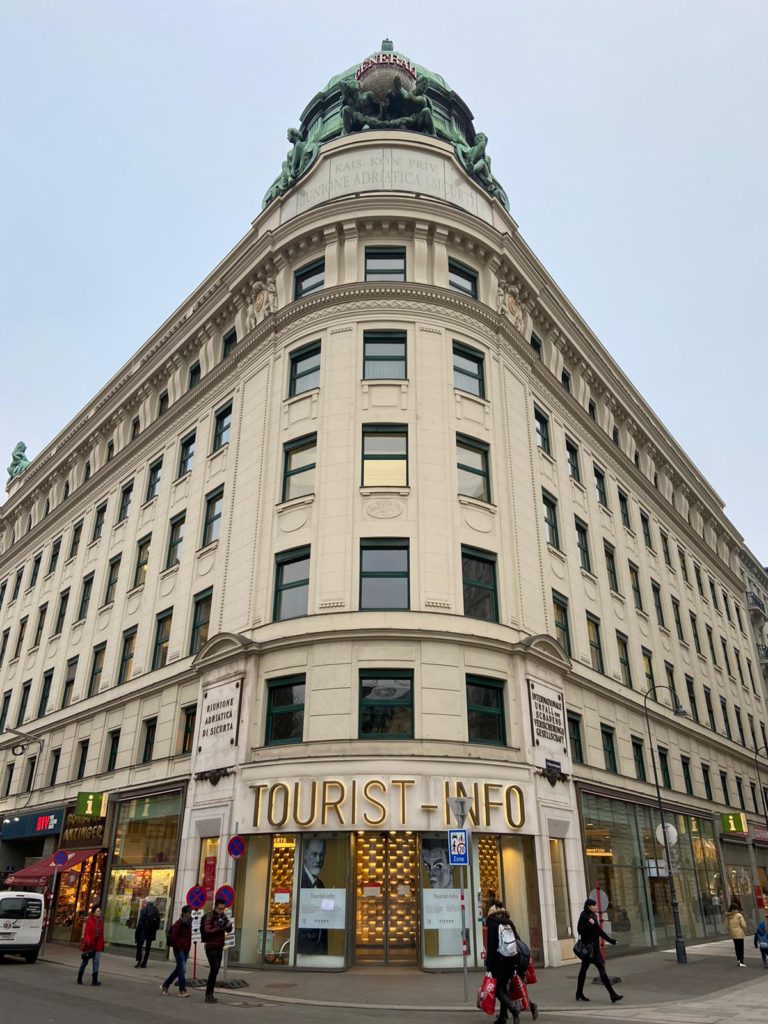
First things first, though. I was right. Vienna was forecast to be grey and cold. -3, to be precise. However, we still had a wonderful time and I’d still jump at the chance to return. Why? Here are some reasons, ideal for anyone else frantically searching for what to do in Vienna in January when it’s cold and the Christmas markets have long gone.
1. Take a winter coat. I know: ‘duh’. But really, it wasn’t until two days before I flew to Vienna, that I really realised. At which point I quickly pulled myself together and packed myself off to Zara, to buy a coat that would keep me warm in the vastly different clime that is an Austrian winter. Luckily the sale was on.
Trying on a thermal, fleece-lined coat complete with (fake) fur-trimmed hood on a sun-drenched afternoon in Valencia felt vaguely ridiculous, but thank God I did. Vienna was cold. If you’re going anytime between November – March, I’d recommend taking plenty of layers, emergency tights to wear under jeans, and gloves/hat, as well as the obligatory warm, winter coat. In other news, I’m turning into my mother.

2. Go to the opera. What better reason to wrap up for the evening than the Vienna State Opera? Charlotte wasn’t convinced, but as she wasn’t arriving until the next day I took the opportunity to grab a ticket to Wagner’s Salome. It wasn’t cheap, so I absorbed it under the bucket of ‘birthday present to myself’ + ‘once in a lifetime trip that I will likely not repeat’. If your budget doesn’t stretch then there are opportunities to go early and queue for very cheap returns if you have time to spare.
Alternatively, grab a gluhwein and watch the free outdoor screening behind the opera house, or poke your nose inside before the show starts (the doors open around 1 hour before the evening performance). Whichever way you get in there, it’s worth a look. The inside of the State Opera House is even more beautiful than the outside. Scenes inside will make your jaw drop – and that’s just the ballgowns and dinner jackets sweeping past you up and down the marble staircases.
The frescoes, pillars, mirrored ceilings and sculptures are stunning, and when I took a seat inside the blood-red velvet and wooden box for the first time ever, I practically felt butterflies. Top tip: get a seat at the front if you can – even the 2nd seats back have poorer vision and sound, and I don’t know how the 3rd seats back can hear or see anything at all.
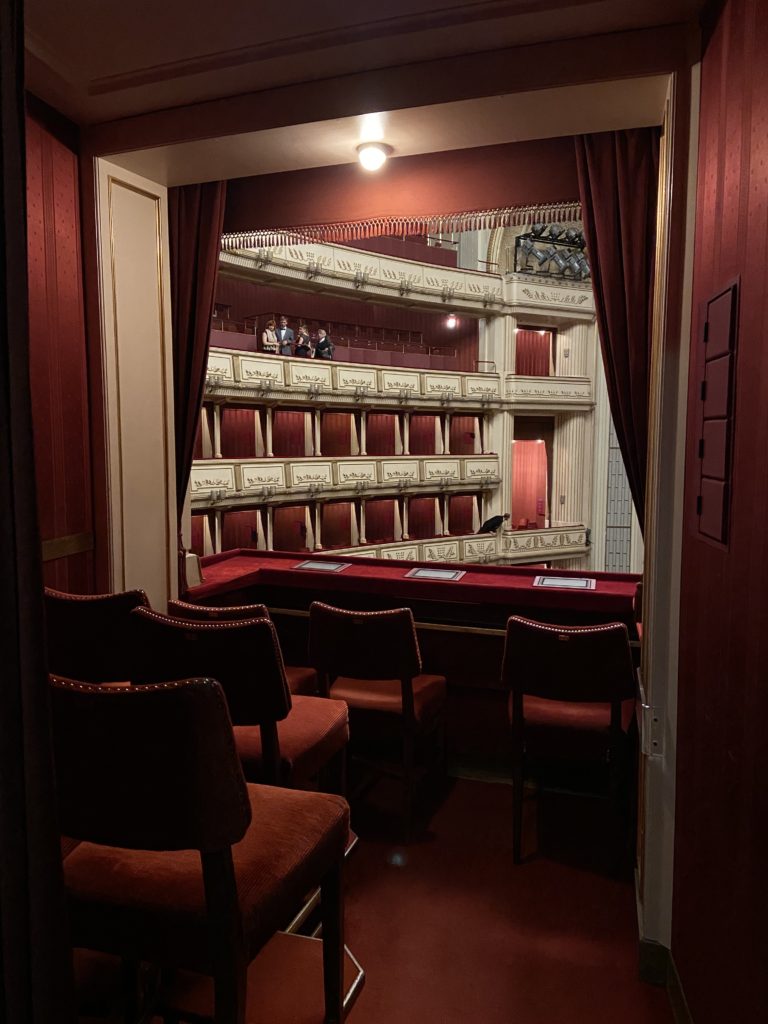
3. Grab a streetside Weiner and gluhwein for dinner. You won’t be able to afford much else after the opera anyway. Seriously though, I think one of life’s great pleasures is balancing the decadent, one-off treats with the simpler things – and what can be simpler than a sausage in a bun? (See also: Big Mac Meal served with a glass of champagne).
Literally a stone’s throw from the Opera House I found such a weiner stand, next to the Albertina museum. The couple in front of me were in full-on formal evening garb – ballgown, tails and all, so I felt I was in the right place. The Santa hat still proudly lit up on its roof provided an additional festive feel.
Despite ‘tchuss’ being pretty much the beginning and end of my German I managed to get a hot dog in a roll, with ketchup, and a mug of gluhwein. Luckily it seems ‘hot dog’ is universally understood. I gave a little toast of gratitude in my head before tucking in, enjoying the warm air sneaking into my enormous new jacket and just about feeling the hot metal on my numb fingers.
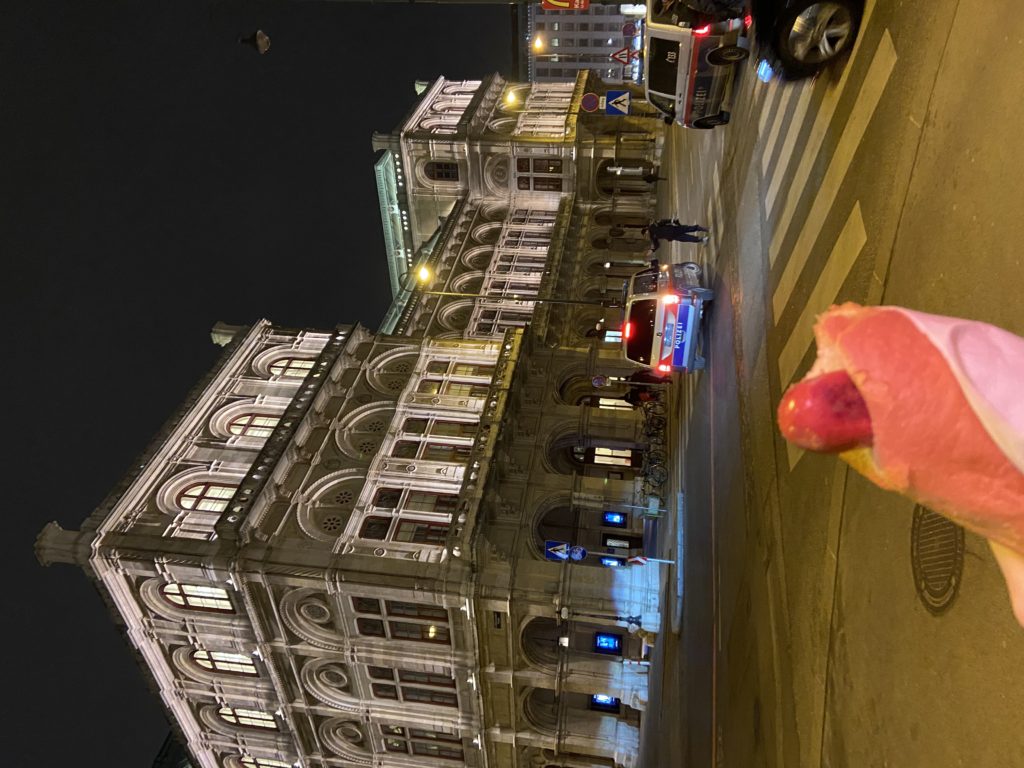
4. Walk as much as possible. It’s free, and it gets the blood going when you can no longer feel your toes. Vienna is very walkable being, mostly, flat, really quite small and almost always incredibly beautiful. Depending on which direction we walked from our hotel, 20-30 min got us into either the centre, full of architectural wonders, sculptures and museums, or into parks and the gardens of the stunning palaces. We only got the metro twice – from the airport, and back, and one Uber each day – otherwise it was thousands of steps and some bracing fresh air.
Being the geeks that we (unashamedly) are, Charlotte and I decided to book a guided walking tour through the city for the Saturday afternoon. They’re usually a good way of getting to see the sights whilst, crucially, learning something about the city you’re passing. Our chosen tour specifically focused on Vienna during the Second World War. Highlights included a walk around the Jewish Quarter, which we may not have seen otherwise given it was on the other side of the city from where we were based.
A personal highlight for me was a visit inside Michaelskirche, or the Church of St Michael, opposite the Spanish Riding School. From the outside it looks rather plain and puritanical, though it dates from the 13th Century. The scene on walking inside, though, is completely arresting. The Baroque altar and facade are awe-inspiring, with stone, metalwork and sculpture lit by candles. When we visited, there was a distant sound of chanting, and the smell of incense permeated the air. Though raised Catholic, you can consider me lapsed, but still the whole scene and atmosphere stopped me in my tracks. I stayed put, transfixed by the atmosphere, whilst the group were taken to another room. I lit a candle to remember someone and I’m glad I did so there.
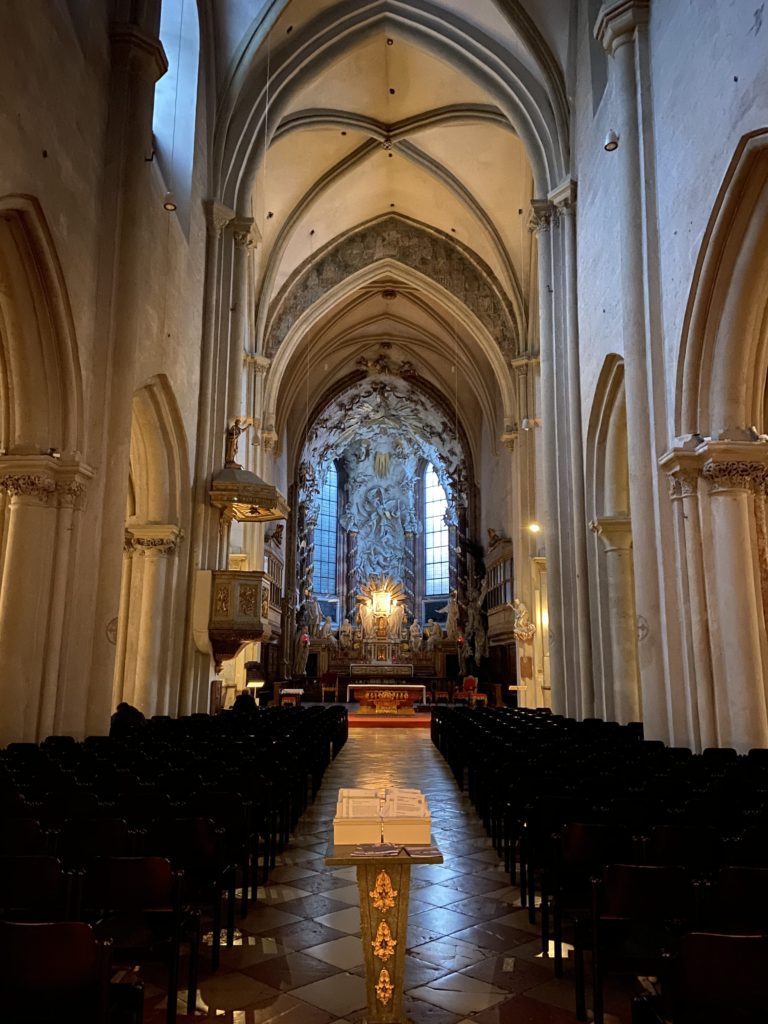
On the Sunday, we decided to go West, walking in the opposite direction from the main city and over to the Schönbrunn Palace. It was pretty bracing but, as the grounds were free to enter – and huge, we decided to forgo the museum and roam around the garden and up to the Gloriette statue, built as a symbol of the Habsburg’s might. We suddenly had a second wind of power on learning that there was a cafe at the top.
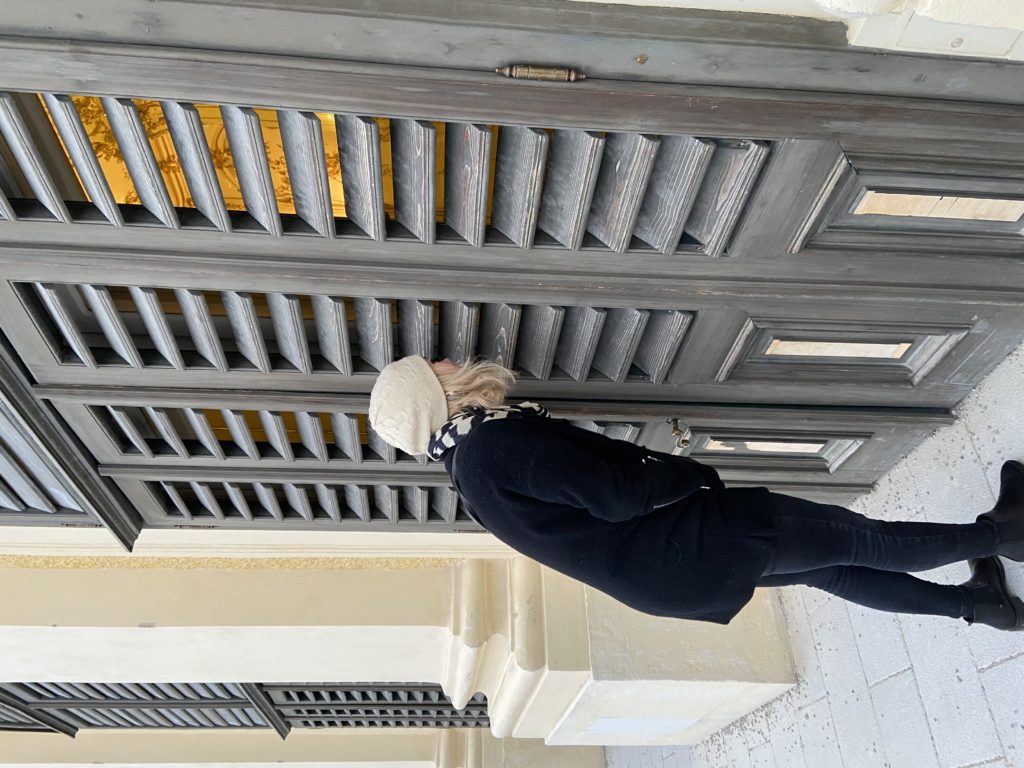
5. Need a break from all that walking? Hide from the elements in one of Vienna’s incredible museums or galleries. After all there are so many to choose from. I was taken aback by just how many cultural institutions Vienna is home to. It makes sense, given that the city has been home to an intersection of arts, music, economics since at least the 17th Century. For a culture junkie like me, I was in heaven. I would go back alone for the museums I didn’t get to visit.
With just 2.5 days there, the first one we visited had to be the Belvedere Museum. Housed in the stunning Belvedere Palace, it features some of the most famous Austrian art from the middle ages to today, including the largest collection of Gustav Klimt’s works, and many works by Egon Schiele.
The highlight for me had to be Klimt’s The Kiss, a cliché some might say, but a surprise for me, never having been drawn to his work. All this changed when I was confronted with it in the flesh – it was so arresting, even with hordes of tourists and the odd selfie stick in front of it. With the painting in front of you, suddenly you could see the textures and iridescence that are usually reduced to flat, matte colours in books (see: Portrait of Fritza Riedler for a great example of this: so dull in the digital reproduction that it looks like a totally different painting).

Looking at my other favourite, Judith and the head of Holofernes, I also realised how sensual his work is, in a way that you wouldn’t expect from a Victorian era artist (though having studied the period for my MA I should really have remembered just how dirty they were).
The other painting which totally stopped me in my tracks was Schiele’s Pair Embracing. Again, dull and reduced down on digital copies, but vital and refreshing when seen in front of you, on a large canvas. Though I recognised his work, I didn’t know much about Schiele, but the museum gave me enough interesting hints to make me visit the Leopold Museum later that weekend.
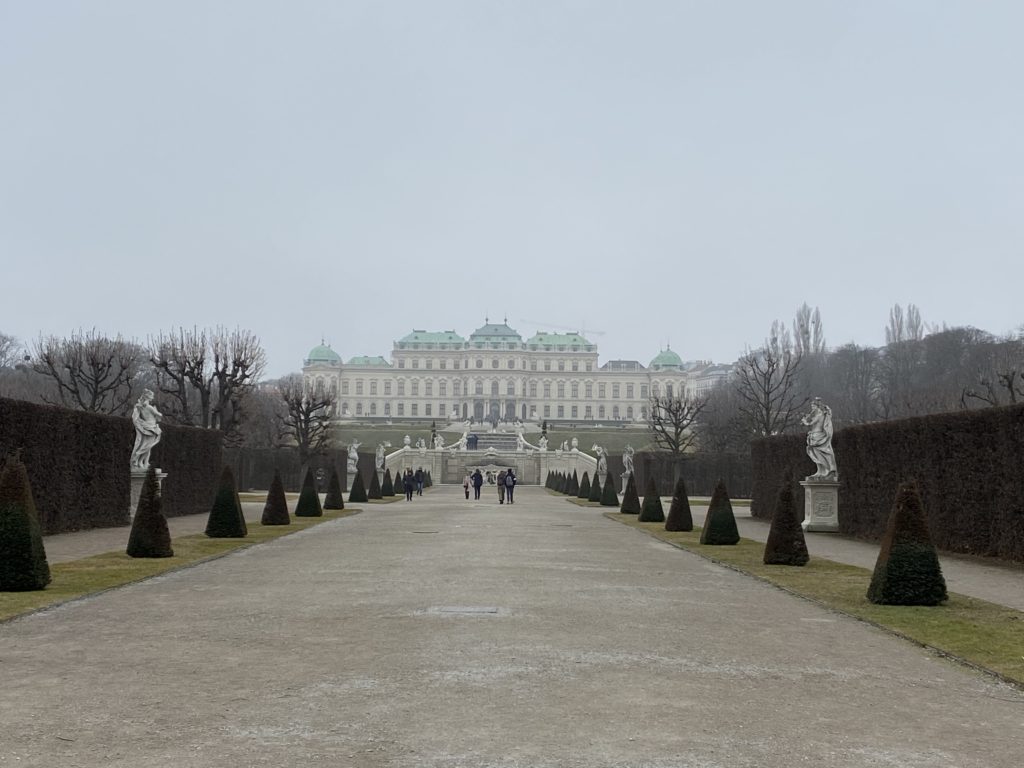
The Leopold Museum is to Schiele what the Belvedere is to Klimt, with the biggest collection of his works. I’d been left a little intrigued about Schiele after reading more about his work in the Belvedere – he died young, of the Spanish Flu, along with his pregnant wife – it seemed especially tragic given his talent. After learning more at the Leopold, though, I became conflicted about my interest in his work, discovering that he was once arrested and imprisoned for ‘seducing’ a 13 year old (their words, not mine). I later learnt he also had an incestuous relationship (again, their words – abusive sounds more like it) relationship with his younger sister. It’s hard to know this and still enjoy his works – particularly his realist portraits of women, however stunning they are. The ‘death of the author’ debate continues…
Putting aside Schiele and my inner debating, the museum was incredible. So many works of modern art, and displayed in a way that meant you were immersed in the cultural history of the period: the art, but also the burgeoning science, psychology and sociology studies, the music and theatre scenes. I really felt a sense of just how exciting it was. Two rooms that really stayed with me were the furniture and interior designs chosen by the ‘bright young things’ of Vienna in the early 1900s, and a room of Japanese imitation art that showed the influence the country had on Austrians again during the turn of the century.
The Leopold Museum is part of Vienna’s Museumsquartier, which is home to several cultural institutions on the same shared space. Next time, I’ll go back to visit more – along with the Museum of Art Fakes which I can’t believe we missed this first time.
… And don’t forget to stop for strudel! Or a slice of Sachertorte, served with a Viennese Coffee. We took ours in the Salon Sacher, a super beautiful space next to the famous Sacher Hotel (home of the eponymous tart). The perfect way to eat all the calories lost from walking around this beautiful, freezing city.
